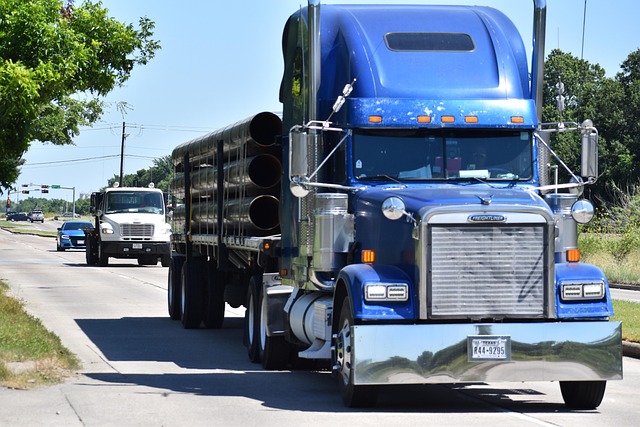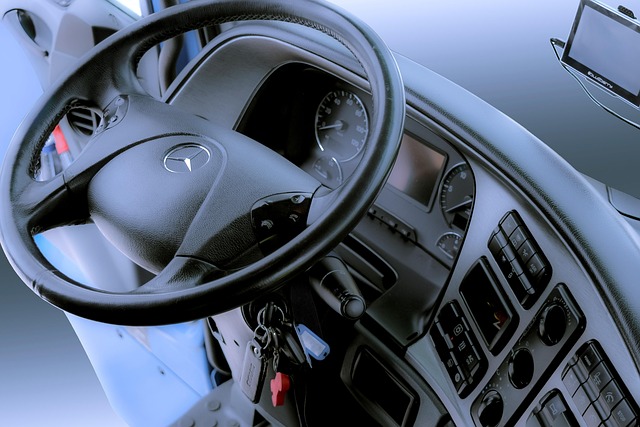Looking to register your car in California? This comprehensive guide walks you through the process, ensuring a smooth transition. From understanding vital registration requirements and gathering essential documents to performing crucial DMV VIN verification, each step is detailed for a seamless experience. Learn how to complete the registration application, pay fees, and obtain license plates—all while adhering to California’s stringent regulations.
- Understand California Car Registration Requirements
- Gather Necessary Documents for DMV Visit
- Perform Vehicle Identification Number (VIN) Verification
- Complete Registration Application at the DMV
- Pay Car Registration Fees and Obtain License Plate
Understand California Car Registration Requirements

Before registering your car in California, it’s crucial to understand the state’s specific requirements. The California Department of Motor Vehicles (DMV) mandates that all vehicles operated within the state be properly registered and display current license plates. This process involves a comprehensive inspection that includes both the vehicle’s physical condition and its unique Vehicle Identification Number (VIN). The DMV conducts a VIN verification to ensure the car’s history aligns with the information provided by the manufacturer, preventing stolen vehicles from entering the state’s roads.
A key aspect of this process is the mobile vin inspection or mobile vin verifier option, allowing you to complete the necessary checks conveniently. This service ensures that your car’s VIN is accurate and valid, meeting California’s stringent registration criteria. By undergoing a thorough vin inspection, you can streamline the registration process, avoiding potential delays or complications later on.
Gather Necessary Documents for DMV Visit

Before visiting a California DMV office, ensure you have all the required documents for a smooth registration process. The key documents include your vehicle’s Registration Application (Form DVF-1), which can be obtained online or from any DMV field office. Additionally, you’ll need proof of insurance, your driver’s license, and the vehicle’s title. For out-of-state transfers, a notarized power of attorney might be necessary. It’s also beneficial to have a valid mobile VIN inspection or vin inspection report, which can be provided by professional mobile vin verifier services, as it streamlines the verification process.
Don’t forget to bring along any other supporting documents that could expedite your visit, such as proof of ownership or previous registration records. Arriving prepared will save you time and potential headaches during your DMV visit, especially considering the importance of a valid DVF-1 form and accurate VIN (Vehicle Identification Number) verification for California vehicle registration.
Perform Vehicle Identification Number (VIN) Verification

Before you can register your car in California, it’s crucial to ensure that your vehicle’s identity is genuine and matches its registration records. One critical step in this process is performing a Vehicle Identification Number (VIN) verification. This involves cross-referencing the unique VIN code of your car with official databases to confirm its make, model, year, and other vital details. Many individuals opt for a mobile VIN verification service, allowing them to complete this task efficiently without visiting a DMV office.
A professional mobile vin verifier can perform an accurate inspection using advanced technology, ensuring that the VIN data is legitimate and unaltered. This step is essential as it helps prevent fraud, ensures vehicle safety, and protects both buyers and sellers. By verifying your car’s VIN, you contribute to a transparent automotive market in California.
Complete Registration Application at the DMV

To begin the registration process for your vehicle in California, head to your nearest Department of Motor Vehicles (DMV) office. There, you’ll need to complete the Registration Application form, which requires various essential details about your car. Among these, the Vehicle Identification Number (VIN) plays a crucial role as it facilitates the dmv vin verification process, ensuring that your vehicle matches the records on file. This step is vital for both accuracy and security, preventing fraud and identity theft.
The application form will ask you to provide information about the make, model, year, and color of your vehicle, along with your personal details as the registered owner. Additionally, you’ll be required to undergo a vin inspection, which can often be conducted conveniently through mobile vin verification services. These services allow for a swift and efficient process, ensuring that all necessary paperwork is in order before final registration.
Pay Car Registration Fees and Obtain License Plate

After completing your car purchase, it’s time to register your vehicle with the California Department of Motor Vehicles (DMV). The next step is to pay the required car registration fees. These fees vary based on the type and weight of your vehicle. You can typically pay online, by mail, or in person at a DMV field office. Once the payment is processed, you’ll receive a Registration Certificate along with instructions for obtaining license plates.
Obtaining license plates involves taking your vehicle and registration documents to a DMV location or an authorized plate agency. A staff member will perform a DMV VIN verification using the unique Vehicle Identification Number (VIN) of your car. This process ensures that your vehicle meets all required safety and emissions standards. Upon successful verification, you’ll be issued a set of license plates which need to be securely fastened to your vehicle.
Registering a car in California involves understanding specific requirements, gathering essential documents, and completing a series of steps at the Department of Motor Vehicles (DMV). After performing a dvm vin verification, you’ll need to fill out a registration application, pay relevant fees, and obtain your license plates. By following these straightforward procedures, you’ll have your vehicle officially registered in no time, ensuring compliance with California’s regulations.
